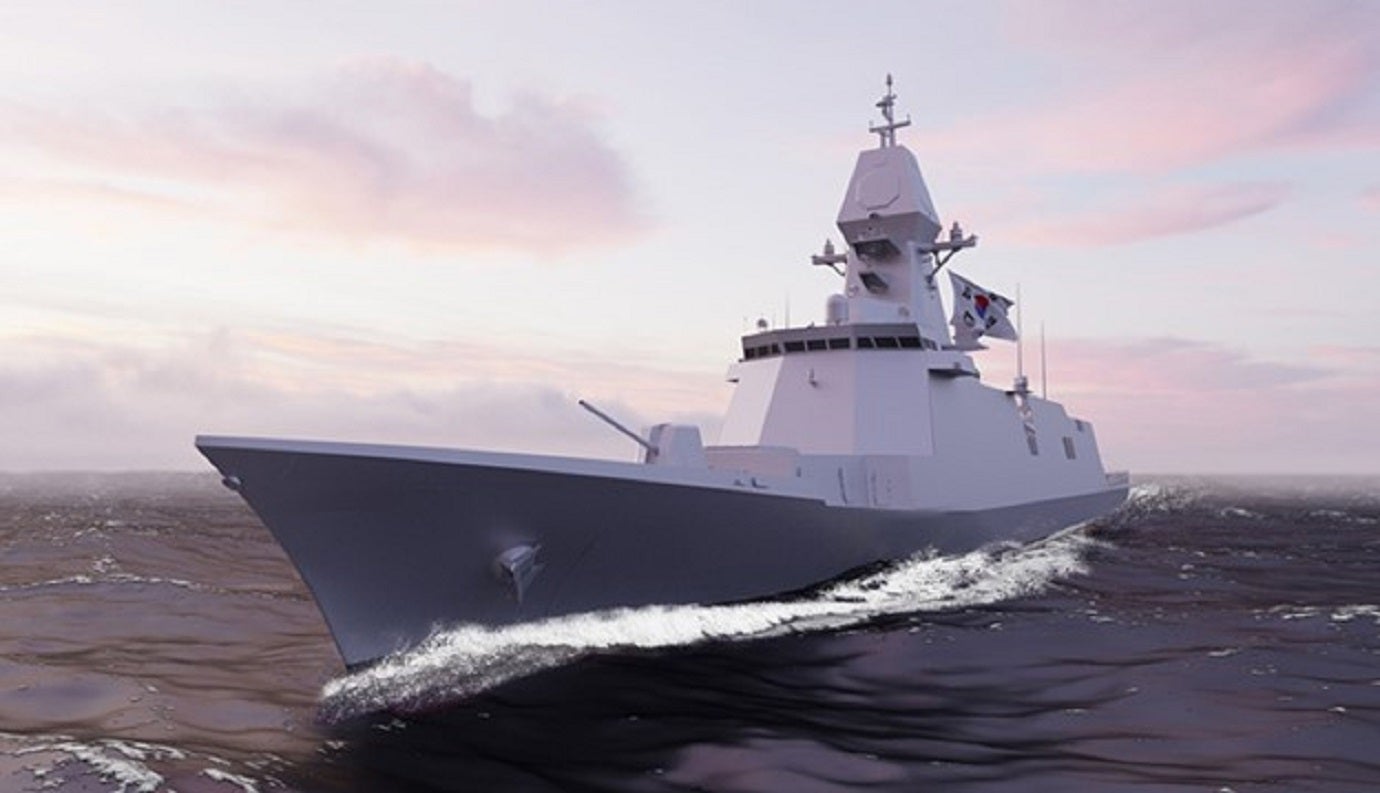
South Korea’s defence procurement agency finalised an agreement worth Won793.3bn ($600m) with shipbuilder, Hanwha Ocean, to replace Hyundai Heavy Industries (HHI) in building two more FFX Batch III frigates, also designated the next-generation Ulsan-class frigates.
On 10 April 2023, the previous shipbuilder HHI launched the Chungnam frigate (FFX), the first of six future FFX Batch III vessels. HHI built this new warship to replace the Navy’s legacy frigate fleet and to preserve a free and open Indo-Pacific from Chinese and North Korean aggression.
Tushar Mangure, Defence Analyst at GlobalData, a leading data and analytics company, offers his view:
“The construction of the next-generation FFX Batch-III frigates is part of South Korea’s naval modernisation strategy, which is mainly aimed at countering the increasing threat posed by North Korea’s new ballistic missile-armed submarines.
“The frigates will also help South Korea increase its military presence and counter the Chinese naval expansion in the East Asia region. The new frigates will be built by Hanwha Ocean to replace the [previous] Ulsan-class vessels that were inducted in the early 1990s.”
The Batch III ships are the culmination of over 15 years of research. Batch I lasted from 2006 to 2016. The Batch II programme, which started in 2011, is still ongoing, with the last ship being scheduled for delivery in 2023.
Development on the Batch III began in 2016. Its production will continue until 2027, with the first ship scheduled for delivery to the Navy in 2024.
According to GlobalData’s Global Naval Vessels and Surface Combatants Market 2023-2033 forecast, South Korea is estimated to spend approximately $19.4bn on the procurement of various categories of naval vessels over the next ten years. The contribution of the frigate segment to the country’s overall naval market is expected to be around 25%.
US pledges to help South Korea in its regional deterrence
At the same time the South Korean Government made this deal, the US Defense Secretary, Lloyd Austin III, and South Korea’s Defense Minister Shin both affirmed US-South Korean relations during the commemoration the alliance’s 70th anniversary.
They affirmed three objectives as their “alliance broadens in scale and scope.”
Firstly, the importance of deterring strategic attacks and aggression from hostile actors in the region, including North Korea, through continued extended deterrence efforts.
Second, the United States and the ROK are determined to modernize capabilities to strengthen the combined defense architecture of the Alliance.
Finally, the United States supports the ROK vision to increase its contributions to the Indo-Pacific as a Global Pivotal State.
The FFX Batch III programme ticks all three boxes, as Mangure suggests that “Over the last decade, North Korea has significantly strengthened the operational capabilities of its missiles and naval force.
“Even though North Korea tends to exaggerate the capabilities of its military, devising an effective strategy to detect and neutralize the submarines is of utmost importance for South Korean policymakers.
“The FFX Batch-III frigates will be equipped with a wide range of indigenous sensors and weapon systems to effectively undertake anti-submarine roles and deter underwater threats originating from North Korea.”



